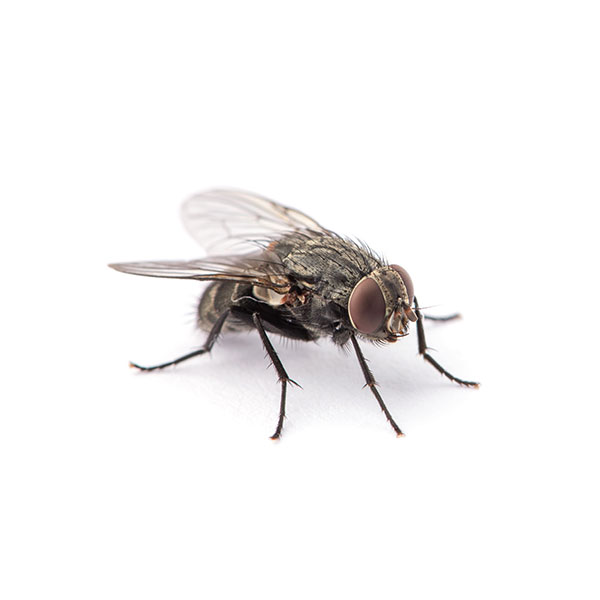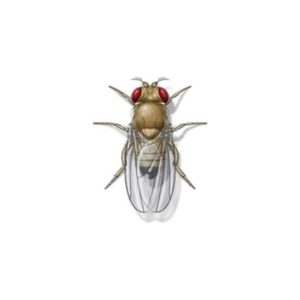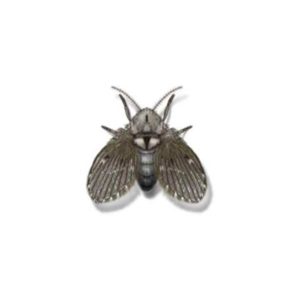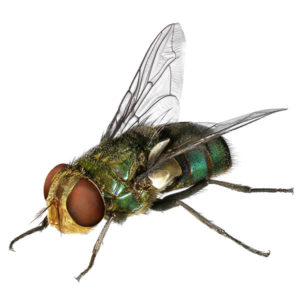House Flies in Florida
House flies (Musca domestica) are among the most common pests in Florida, frequently seen in homes, businesses, and outdoor spaces. Though they may seem harmless, these insects can pose significant health risks by spreading diseases and contaminating food.
What Do House Flies Look Like?
Adult house flies are small insects with distinctive features, making them easy to identify. They have a grayish body, four black stripes on their thorax, and large, prominent red compound eyes. Their body measures about 6 to 7mm long, and they have translucent wings. House flies lack biting mouthparts; instead, they have a sponge-like mouthpart designed to consume liquid or semi-liquid food.
Though often mistaken for other flies like cluster flies or blow flies, house flies have traits that set them apart. For example, they are generally smaller than blow flies and lack the metallic sheen associated with their relatives.
Signs of a House Fly Infestation
Several key indicators can identify a house fly infestation:
- Large numbers of flies indoors: Seeing house flies in large numbers around windows, garbage cans, or food sources is a clear sign of an infestation.
- Larvae or maggots: House flies lay eggs in decaying organic material, and their larvae, or maggots, may appear in garbage, animal feces, or other rotting matter.
- Buzzing sounds: The distinctive sound of buzzing flies is often a sign they are nearby.
- Defecation or vomitus: House flies leave behind tiny black specks of feces or vomit on surfaces, often near food or trash.
Habitat, Diet, Life Cycle & Behaviours
Where Do House Flies Live?
Found on every continent except Antarctica, the house fly is one of the most familiar of all insects. House flies are generally found in the greatest numbers during the hotter summer months and generally live in close proximity to humans and animals. These pests breed in animal wastes and decaying organic material, including animal corpses and food waste, from which they can pick up bacteria and viruses that may cause human disease. House flies defecate almost every time they land, contaminating food with the potential to spread disease.
Animal manure is a favorite breeding medium for flies with the most important sites being horse manure, human excrement, cow manure, fermenting vegetable refuse, dumpsters and refuse containers, and household garbage. Some species of flies can live and breed in recycling containers, and fly problems are common in recycling centers.
Diet
House flies primarily rely on liquid or semi-liquid food sources for sustenance, using their specialized sponge-like mouthparts to consume nutrients. Their diet includes a variety of organic materials, such as decaying matter, sugary substances, animal feces, and garbage residues. House flies are also known to liquefy solid foods by secreting saliva onto them, making the nutrients easier to ingest. This opportunistic feeding behavior enables them to thrive in unsanitary environments, often leading to contamination of food and surfaces.
Life Cycle
The house fly’s life cycle consists of four stages: egg, larva (commonly referred to as a maggot), pupa, and adult. Female house flies can lay up to 150 eggs at a time, typically in decaying organic material such as food waste or feces. The eggs hatch within 24 hours, releasing larvae that feed on their surroundings for 5 to 14 days. After this feeding period, the larvae enter the pupal stage, forming a protective pupal case or puparium. Within a few days, adult flies emerge, ready to reproduce and begin the cycle anew. The rapid progression through these stages allows house flies to multiply quickly, often resulting in large-scale infestations in a short amount of time.
Behaviors
House flies are highly mobile and often travel between food sources and filth. They are most active during daylight hours and exhibit a strong attraction to food odors, waste, and light, often entering homes in search of these resources. They are known to defecate and regurgitate on surfaces, spreading bacteria and contaminants. Their tendency to land on garbage, feces, and food makes them effective carriers of diseases such as dysentery, typhoid, and salmonella.
Are House Flies Dangerous?
Although house flies do not bite, they are capable of transferring more than 100 different pathogens, including salmonellosis, typhoid, and tuberculosis. Pathogenic organisms are picked up by flies from garbage, sewage, and other sources of filth, and then transferred on their mouthparts, through their vomitus, feces, and contaminated external body parts to human and animal food. They can carry a wide range of germs from filthy breeding sites to the dinner table or spread some diseases within herds or flocks.
How to Get Rid of House Flies?
Effectively getting rid of house flies involves a combination of proactive sanitation and targeted control measures. Start by eliminating breeding grounds, disposing of garbage frequently, cleaning up animal waste promptly, and removing any decaying organic material from your property.
Installing tight-fitting screens on doors and windows is a practical way to block flies from entering your home. For existing infestations, fly traps (including our Lumnia insect light traps for commercial venues) can significantly reduce indoor fly populations.
Additionally, professional pest control treatments are highly effective in eradicating severe infestations and implementing long-term prevention strategies. For persistent fly problems, consulting a pest control expert like Florida Pest Control ensures thorough and lasting solutions. Learn more about our residential fly control services.
House Fly Prevention Tips
Preventing house flies from invading your home begins with maintaining a clean and unattractive environment for them. Ensure garbage is kept in bins with tight-fitting lids and emptied regularly to reduce attractants. Store food in sealed containers to prevent contamination and avoid exposing any food, and clean up sugary or organic spills immediately, as these are highly appealing to flies.
Seal cracks, gaps, and other entry points around doors, windows, and walls to stop flies from getting indoors. Regularly clean drains, as organic material buildup can attract flies like Phorid flies and fungus gnats. Following these preventive measures can help keep house flies and other pests at bay.
Do You Have a Fly Infestation Problem? We Can Help.
Florida Pest Control is here to assist you if you’re dealing with a persistent house fly infestation. Our expert team identifies, manages, and prevents house fly infestations.
Challenging infestations require professional solutions—contact us today to schedule an inspection and get a free quote for our residential fly control services. Don’t let flies jeopardize your health or disrupt your home.
Explore our services, including detailed guides on the types of flies in Florida and blow fly facts and identification, to learn more.
Need help with House flies?
We'll call you! Leave your information below.
FAQs
Do house flies bite?
No, house flies (Musca domestica) do not bite. Unlike biting flies such as stable flies (Stomoxys calcitrans), house flies lack biting mouthparts. Instead, they have sponge-like mouthparts designed for consuming liquid or semi-liquid food. While they don’t bite, house flies can still pose health risks by contaminating food and surfaces with bacteria and pathogens they pick up from unsanitary environments.
Do house flies lay eggs?
House flies lay their eggs in decaying organic material, making it an ideal food source for their larvae, or maggots. Common egg-laying sites include animal feces, rotting food, garbage, and manure piles. Female house flies can lay up to 150 eggs at a time, and the eggs hatch into larvae within 24 hours under favorable conditions.
Where do house flies come from?
House flies typically originate from areas with decaying organic matter, which provides a perfect breeding ground. In rural settings, manure piles and animal feces are common sources, while in urban areas, garbage bins, compost piles, and fermenting lawn clippings attract flies. Once they emerge as adults, house flies are drawn to food sources and waste, often entering homes and businesses through open windows and doors.
Do house flies have antennae?
Yes, house flies have antennae. Their antennae are small and located between their large compound eyes on their heads. These sensory structures help house flies detect odors, which is crucial for finding food and suitable egg-laying sites. Despite their small size, the antennae play a significant role in the fly’s ability to navigate its environment and locate organic material.
Need help with House flies?
We'll call you! Leave your information below.





